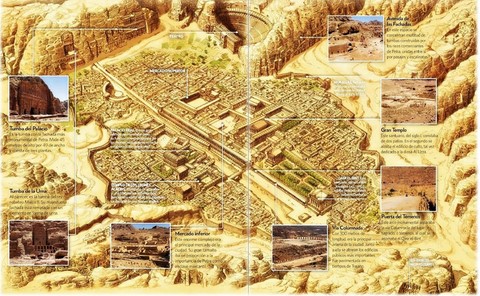Arabs of the 8th century: cultural imitators or original creators?
by Gunnar Heinsohn

A straightforward way to understand the Muhammad-figure is as an Arab who wants to teach Judaism to other Arabs, i.e., who wants to be a prophet for them. That is why Moses (Mûsâ ibn' Imran), with 137 mentions, is the most frequently mentioned figure in the Quran. One could rightly call the Quranic text a Moses-inspired book focusing on highlights for whose long versions one would still have to consult the Hebrew Bible. The day that Moses and the Israelites escaped Pharaoh is remembered by the Sunni on Ashura, on the 10th day of Muharram.
Muhammad wants to do justice to a Prophet's duties by fulfilling that role in a way that is both understandable and entertaining for his Arab (future Sunni) listeners. It is precisely this approach that was accepted by some on the Jewish side. Other Jews, however, rejected Muhammad’s method as a simplification and reduction of basic Hebrew texts by an insufficiently educated person. From them comes mockery of Muhammad as ha-meshuggah (Stillman 1979,236; to this day in Jerusalem this expression is used to refer to people who consider themselves to be Jesus returnees or to those who are similarly possessed). In turn, Muhammed may have scorned his doubters as poor amateurs, while winning over a huge following.
Among Jewish acceptors of Muhammad, Rabbi Shimon bar Yochai becomes significant for the chronology of Muhammad. During Imperial Antiquity (1st-3rd c.), Shimon was active after 70 CE (after the Roman destruction of Jerusalem’s Temple), i.e. during the 1st and 2nd century. He calls Muhammad "a prophet sent to Ishmael according to God's will", in other words, a representative of the God of the Jews for Arabs. Interestingly, however, the report on Rabbi Shimon's positive assessment of Muhammad comes from the Early Middle Ages (8th-10th c.) some 700 years later, precisely from the 8th century (Prawer/Ben-Shammai 1994, 304). Since such a time setting for Rabbi Shimon’s acceptance of Muhammad matches stratigraphy, Muhammad would have lived in the 8th/9th century. With that date, it would no longer be surprising that the earliest Arab-Islamic sirahs (texts on contracts, deeds and orders of the prophet) originate from the 8th/9th. With Muhammad in the 7th century of our textbooks, however, scholars, theologians and historians have never understood why there is no literature about him for another 150 years...

